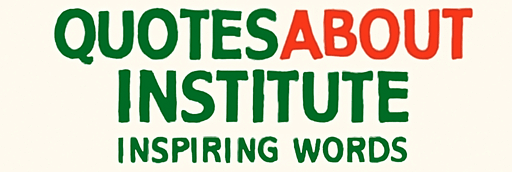
Are TED Talks Italicized or Quoted? Navigating the Nuances of Citation
The world of ideas, as presented through TED Talks, is a dynamic and influential landscape. These concise, powerful presentations have transformed how we consume information and engage with complex topics. But when it comes to referencing these talks in your own writing, a crucial question arises: are TED Talks italicized or quoted? The answer, as with many aspects of academic and professional writing, depends on the specific style guide you’re adhering to. This article will delve into the proper formatting of TED Talks, exploring the nuances of citation and providing clear guidance for authors, students, and anyone looking to accurately represent these compelling presentations.
Understanding the correct formatting is not merely a matter of aesthetics; it’s about accurately representing the source material and giving credit where it’s due. Incorrect formatting can lead to confusion, misrepresentation, and even accusations of plagiarism. Therefore, whether you’re writing a research paper, a blog post, or a formal report, knowing how to cite a TED Talk correctly is essential. This guide will break down the common style guides and provide clear examples to ensure your citations are accurate and professional.
The Core Question: Italics or Quotation Marks?
The fundamental question, “are TED Talks italicized or quoted?” hinges on whether you are referring to the talk itself (the specific presentation) or the title of the talk. This distinction is key. Generally, the title of a TED Talk is placed within quotation marks, while the overall TED Talk (the presentation) is treated differently depending on the style guide. The talk is typically not italicized as it is a presentation and not a standalone published work like a book. However, the way you cite the talk within your text and in your bibliography will vary depending on the style guide you choose to follow.
Understanding Style Guides and Their Impact
Different academic and professional fields rely on specific style guides to ensure consistency and clarity in writing. The most common style guides include:
- MLA (Modern Language Association): Primarily used in the humanities, especially in literature and language studies.
- APA (American Psychological Association): Favored in the social sciences, education, and psychology.
- Chicago/Turabian: A versatile style guide used across a wide range of disciplines, offering both notes-and-bibliography and author-date systems.
- AP (Associated Press): The standard for journalism and news writing.
Each of these style guides has its own specific rules for citing various types of sources, including TED Talks. It’s essential to identify the style guide required by your instructor, publication, or institution before you begin writing.
TED Talks in MLA Style
In MLA style, the title of a TED Talk is typically placed within quotation marks. The citation will include the speaker’s name, the title of the talk, the TED platform (e.g., TED.com), the date of publication, and the URL. The overall TED Talk is not italicized.
Example:
In her TED Talk, “The Power of Vulnerability,” Brené Brown discusses the importance of embracing imperfections (Brown). In this example, “The Power of Vulnerability” is in quotation marks. The full citation in a works cited list would look like this:
Brown, Brené. “The Power of Vulnerability.” TED.com, June 2010, www.ted.com/talks/brene_brown_the_power_of_vulnerability.
It is important to note the use of quotation marks for the title of the TED Talk, and the italicization of the platform (TED.com) in the works cited entry. The overall TED Talk itself is not italicized in the text, but the URL is included for easy access.
TED Talks in APA Style
APA style, commonly used in the social sciences, has slightly different guidelines. The title of the TED Talk is still placed within quotation marks. The citation generally includes the speaker’s name, the year of the talk, the title of the talk, the platform (TED.com), and the URL. Again, the overall TED Talk is not italicized.
Example:
In her presentation, “How Great Leaders Inspire Action,” Simon Sinek outlines the principles of effective leadership (Sinek, 2009). The full reference in an APA reference list would look like this:
Sinek, S. (2009, September). How great leaders inspire action [Video]. TED. Retrieved from www.ted.com/talks/simon_sinek_how_great_leaders_inspire.
Note the use of quotation marks around the title of the TED Talk. The format also specifies the inclusion of ‘[Video]’ and the retrieval information.
TED Talks in Chicago/Turabian Style
Chicago/Turabian style provides more flexibility, as it offers both notes-and-bibliography and author-date systems. The general principle is the same: the title of the TED Talk is enclosed in quotation marks. The citation details will vary depending on whether you are using notes and a bibliography or the author-date system.
Example (Notes and Bibliography):
In a footnote: 1. Malcolm Gladwell, “Choice, Happiness, and Spaghetti Sauce,” TED, February 2004, www.ted.com/talks/malcolm_gladwell_choice_happiness_and_spaghetti_sauce.
In the bibliography: Gladwell, Malcolm. “Choice, Happiness, and Spaghetti Sauce.” TED. February 2004. www.ted.com/talks/malcolm_gladwell_choice_happiness_and_spaghetti_sauce.
Example (Author-Date):
(Gladwell 2004) in text. The full reference in the reference list: Gladwell, Malcolm. 2004. “Choice, Happiness, and Spaghetti Sauce.” TED. February. www.ted.com/talks/malcolm_gladwell_choice_happiness_and_spaghetti_sauce.
The key takeaway is that the title is in quotation marks, while the specific formatting of the other elements depends on the chosen system.
TED Talks in AP Style
AP style, used widely in journalism, offers a more streamlined approach. In general, the title of the TED Talk is placed within quotation marks. AP style prioritizes brevity, so the citation may be simpler than in academic styles. The main goal is to provide enough information for the reader to find the source.
Example:
In his TED Talk, “The Danger of a Single Story,” Chimamanda Ngozi Adichie discusses the importance of multiple perspectives. The full citation would include the speaker’s name, the title, and the platform.
Best Practices for Citing TED Talks
Regardless of the style guide you choose, here are some best practices to follow when citing TED Talks:
- Accuracy: Double-check all details, including the speaker’s name, the title of the talk, the date, and the URL.
- Consistency: Be consistent with your formatting throughout your document.
- Clarity: Provide enough information for your readers to easily locate the source.
- Accessibility: Ensure that the URL is accurate and functional.
- Consult the Style Guide: Always refer to the latest edition of the style guide you are using for the most up-to-date information.
Avoiding Common Mistakes When Citing TED Talks
Several common mistakes can lead to inaccurate citations. Avoiding these errors will help you maintain the integrity of your work:
- Incorrect Use of Italics: Do not italicize the entire TED Talk unless your style guide specifically requires it for the platform (e.g., TED.com in MLA).
- Inconsistent Formatting: Maintain consistency in your use of quotation marks, capitalization, and punctuation.
- Missing Information: Always include the speaker’s name, the title of the talk, the platform (TED.com), and the date.
- Using Outdated Information: Always consult the most recent edition of your chosen style guide. Style guides evolve, and citation rules can change.
The Significance of Accurate Citation: Why It Matters
Accurate citation of TED Talks, or any source for that matter, is crucial for several reasons:
- Credibility: Proper citation enhances your credibility as a writer and researcher.
- Academic Integrity: It avoids plagiarism and upholds ethical standards.
- Respect for Intellectual Property: It acknowledges the speaker’s work and contributions.
- Facilitating Further Research: It allows readers to easily find and explore the original source material.
The proper citation of a TED Talk, whether it involves quotation marks or italics, is a sign of thorough research and respect for the ideas presented. It is an important part of the writing process.
Conclusion: Mastering the Art of TED Talk Citation
So, are TED Talks italicized or quoted? The answer, as we’ve seen, is nuanced. The title of a TED Talk is generally placed within quotation marks. The overall TED Talk (the presentation itself) isn’t italicized. However, the specific formatting will vary depending on the style guide you choose. By understanding the rules of MLA, APA, Chicago/Turabian, and AP styles, you can ensure that your citations are accurate, consistent, and professional. Mastering these citation guidelines is essential for anyone who wants to use these compelling presentations in their writing. Remember to always consult the specific style guide required by your institution or publication. This knowledge will help you correctly format your citations and avoid common errors, ensuring the integrity of your work and giving proper credit to the brilliant minds behind these impactful talks. Ultimately, accurate citation reflects a commitment to intellectual honesty and a deep respect for the power of ideas presented through TED Talks. Now, go forth and cite with confidence!
[See also: How to Cite a YouTube Video in APA Style] [See also: Understanding Plagiarism and How to Avoid It] [See also: The Importance of Proper Citation in Academic Writing]

